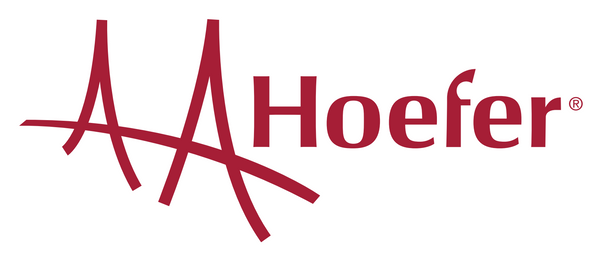Streamlining Semi-Dry Transfer in Blotting — Quick Fixes for Fast Results
Semi-dry transfer is designed for speed and buffer efficiency, completing Western blots in as little as 10–30 minutes—ideal for high-throughput or diagnostic labs. The compact stack design uses minimal buffer, but because it lacks a full liquid reservoir, consistency depends on uniform pressure, proper buffer composition, and careful stack setup.
Hoefer’s TE77 Semi-Dry Transfer Unit and TE70X series are engineered to provide even current distribution, high reproducibility, and precise pressure control. While wet tanks remain the benchmark for precision, semi-dry systems are invaluable when time and buffer economy are priorities.
Common Problem 1: Patchy or Low-Yield Transfers
Symptoms: Weak or incomplete bands, especially in gel centers.
Possible Causes: Uneven wetting of filter papers, inconsistent stack pressure, overheating from excessive current.
Solutions:
- Prepare Stack Properly: Fully soak filter papers in fresh transfer buffer for 5 minutes to ensure complete hydration.
- Apply Consistent Pressure: Use moderate, uniform pressure across the entire gel area. The TE77’s adjustable plate system helps maintain even contact.
- Monitor Voltage and Time: Operate around 15 V/cm for 30 minutes or 1.5 mA/cm²; avoid runs longer than 45 minutes to prevent heat buildup.
Pro Tip: Disassemble stacks immediately after transfer and rinse components to extend lifespan and reduce contamination risk.

Common Problem 2: Excessive Background or Streaking
Symptoms: Streaked or hazy membranes with uneven background.
Possible Causes: pH shifts due to ion migration, residual gel proteins or buffer salts, electrode contamination.
Solutions:
- Buffer Refresh: Replace anode and cathode buffers every 2–3 runs to maintain conductivity and pH stability.
- Pre-Wash Gels: Equilibrate in 0.01 % SDS buffer for 10 minutes before transfer.
- Clean Electrodes Regularly: Rinse with deionized water and wipe gently with ethanol to remove residues.
- Optimize Detection: Use appropriate antibody dilutions (1:5000–1:10,000) and limit ECL exposure times.
Real Lab Example: A team reduced background by alternating nitrocellulose and PVDF membranes and cleaning electrodes weekly, achieving clearer, more uniform results.

Common Problem 3: Electrode or Stack Damage
Symptoms: Reduced current, blackened filter papers, or burnt spots.
Possible Causes: Excessive salt buildup or dried stacks, overloading samples, prolonged run times.
Solutions:
- Routine Maintenance: After each run, clean electrodes with deionized water; deep clean monthly using a mild bicarbonate solution.
- Limit Sample Load: Do not exceed 20 µg/lane to avoid overcurrent conditions.
- Prevent Drying: Always ensure sufficient buffer moisture before starting the run.
Real Lab Example: Researchers using the TE77 unit reduced overheating incidents by running shorter intervals and allowing cooling periods between transfers.

Why Semi-Dry Complements Wet Tank
Semi-dry systems like Hoefer’s TE77 provide an efficient, low-buffer alternative for rapid transfers. They are ideal for routine or time-sensitive experiments where throughput matters most.
Wet tank systems, on the other hand, remain essential for large proteins, complex samples, or high-sensitivity replicates. Together, they form a complementary toolkit, allowing researchers to balance speed, reproducibility, and resolution based on experimental needs.
References
Towbin, H., Staehelin, T., & Gordon, J. (1979). Electrophoretic transfer of proteins from polyacrylamide gels to nitrocellulose sheets: procedure and some applications. PNAS, 76(9), 4350–4354.
Kurien, B. T., & Scofield, R. H. (2006). Western blotting: an introduction. Methods in Molecular Biology, 131, 17–30.

